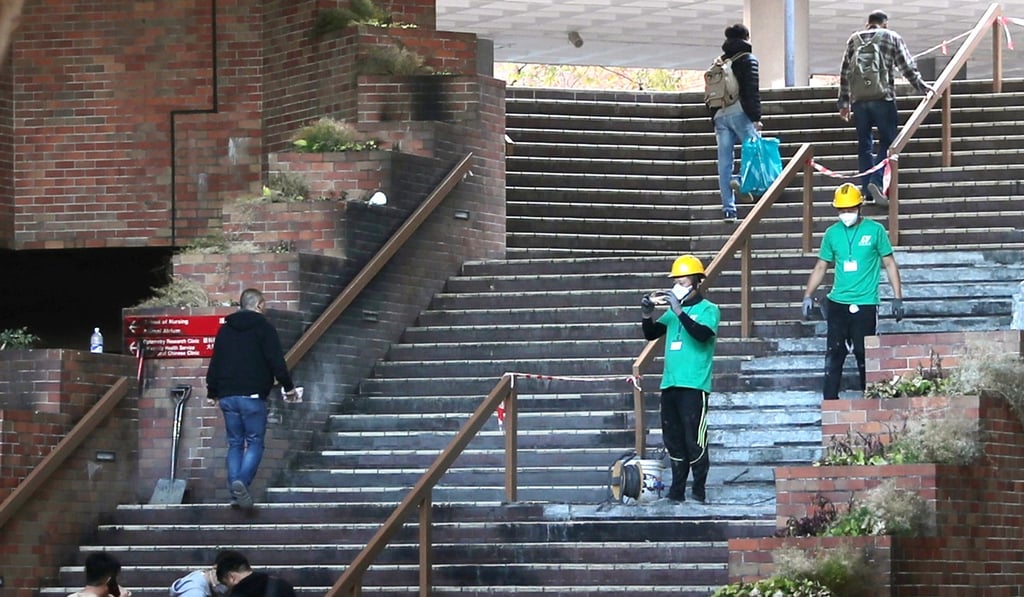Advertisement
Polytechnic University campus, battered by Hong Kong anti-government protests, to reopen mid-January
- Police laid siege to Polytechnic University’s Hung Hom site after violent clashes with demonstrators in November
- Campus chiefs set a date for reopening, after ‘preliminary safety assessments of the buildings on campus’
Reading Time:2 minutes
Why you can trust SCMP

The trashed campus of Polytechnic University is expected to fully reopen by the middle of next month for the start of the new term, following checks on air quality, structural safety and building contamination, campus chiefs have said.
University management, which had earlier announced the resumption of classes on January 13, said test results of dioxin levels and cyanide components would be ready within a week.
The Hung Hom campus was the scene of violent clashes between anti-government protesters and police, and a resulting 13-day police siege, last month.
Advertisement
Radical protesters unleashed chaos in and around the university on November 17, triggering violent exchanges of petrol bombs and tear gas with police. The force declared the unrest a riot, before surrounding the site. Thousands of petrol bombs and other weapons were recovered from the grounds after the siege came to an end on November 29.

Advertisement
The latest progress was touched on in a letter jointly issued by president Professor Teng Jin-guang and five vice-presidents, to staff and students on Monday.
Advertisement
Select Voice
Choose your listening speed
Get through articles 2x faster
1.25x
250 WPM
Slow
Average
Fast
1.25x